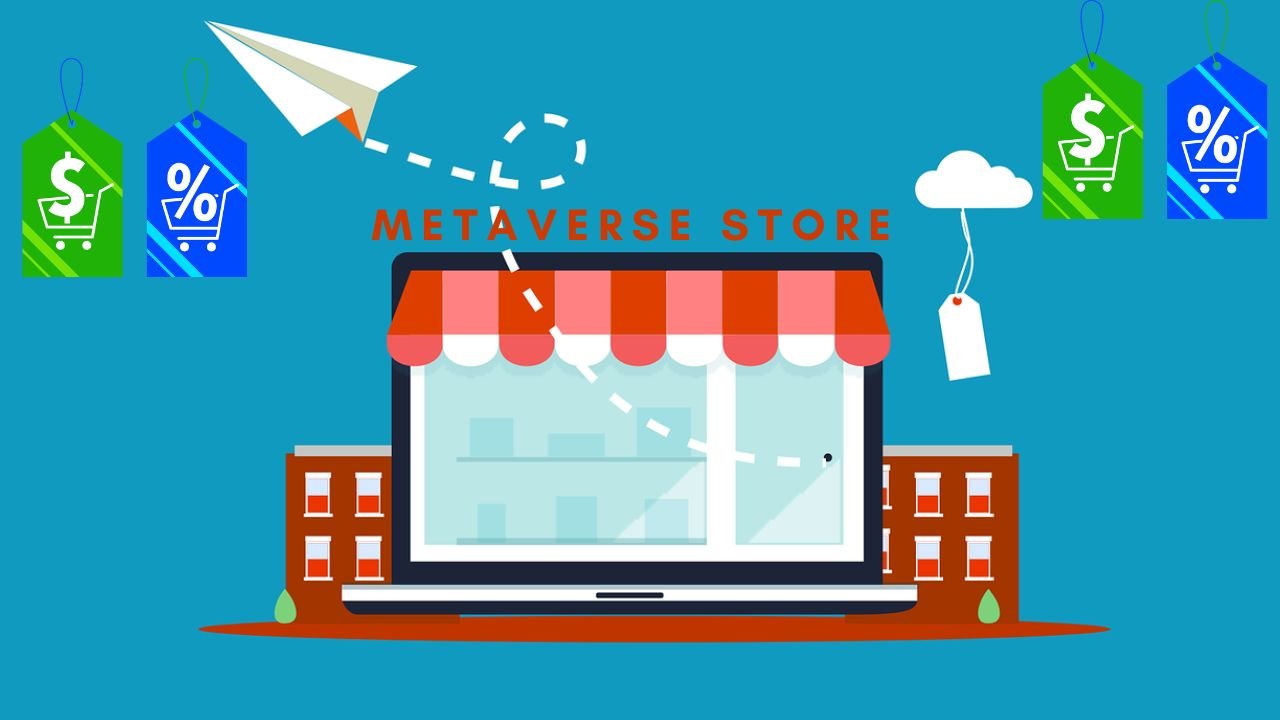Metaverse-based virtual stores are quickly becoming the go-to solution for online retailers, offering a range of benefits from convenience to cost efficiency on metaverse platforms. With the right tools and strategies, anyone can design and build a successful virtual metaverse store that engages customers, increases sales, and adds value to their business. In this blog post, I will show you how to design and build a Metaverse-based virtual store.
Key Takeaways:
- Research your target market before building a virtual store metaverse project.
- Identify the platform you want to use and design an appealing store layout.
- Implement payment options, choose products, add product descriptions, create customer support systems, and promote your store.
- Design a unique aesthetic for your virtual store, build engaging content, develop an easy navigation system, offer interactive shopping experiences, and utilize gamification elements.
- Create personalization opportunities, integrate shopping tools, and utilize social media.
- Consider your target audience, examine platform features, analyze platform popularity, investigate security measures, consider development costs, evaluate the ease of integration, assess support services, and research user experience.
- Monitor the performance of your store to see what is working and identify areas for improvement.
Types of Virtual Store?
Online Marketplace
These virtual stores are an online version of a physical world store in virtual worlds, allowing customers to purchase items or virtual objects from multiple vendors on the same metaverse platform.
Subscription-based Store
These virtual space stores offer customers access to products, services, or content in exchange for monthly or yearly subscription fees in a virtual environment.
Social Commerce Store
Store in the metaverse virtual world is highly interactive, allowing customers to interact with other shoppers and influencers directly while making purchases.
Retail Storefront
These virtual stores act as a storefront for buyers and sellers, providing an easy way to browse and purchase items in a digital world marketplace.
Online Shopping Mall
This type of virtual store mimics the look and feel of a physical shopping mall, allowing customers to shop from multiple stores in metaverse space.
Augmented Reality Store
This type of metaverse store uses augmented reality technology to allow customers to experience a product before buying it.
Mobile Shopping App
These metaverse business apps provide customers with access to an online store that they can use directly on their mobile phones and other devices.
3D Shopping Experience
This type of virtual store uses 3D renderings to create an immersive shopping experience for customers in digital space.
Voice-enabled Store
These virtual stores use voice recognition technology to enable customers to purchase items using only their voices in virtual spaces.
Virtual Reality Store
By utilizing virtual reality, this type of virtual store allows shoppers to explore a simulated environment and purchase items as they would in the real world.
What are the Benefits of Virtual Stores?
Increased Reach
Virtual stores can reach a much larger audience than traditional brick-and-mortar stores, allowing businesses to tap into new markets and gain more customers.
Lower Overhead Costs
Virtual stores have lower overhead costs than physical stores, allowing businesses to save money on rent, staffing, and other associated expenses.
Improved Customer Experience
Virtual stores offer customers an immersive shopping experience, with access to a wider range of products and services.
Increased Convenience
With virtual stores, customers can shop anytime, anywhere, allowing them to purchase items on their schedule.
Enhanced Personalization
Virtual stores allow businesses to tailor their offerings to individual customer needs and interests, providing a more personalized experience and selling virtual goods.
Increased Security
Virtual stores use the latest security measures to protect customer’s data and ensure their transactions are safe and secure.
Faster Shopping Process
With virtual stores, customers can quickly browse products, make purchases, and check out in a matter of seconds.
Scalability
Virtual stores can be easily scaled up or down depending on the size of the business, allowing them to accommodate changes in sales volume.
How to Build a Metaverse-Based Virtual Store
Research Your Target Market
Before building your virtual store metaverse project, it is important to understand the needs and preferences of your target audience. This will help you tailor your store to meet their specific requirements and expectations.
Identify Your Platform
Decide which platform you want to use yourself or with your development team for your virtual store, such as a 3D metaverse or an online marketplace.
Design Your Store Layout
Create a layout for your virtual store that is easy to navigate and visually appealing. This should include sections for product categories, payment options, shipping details, etc.
Implement Payment Options
Make sure you have the right payment options in place to ensure secure transactions for your customers. Choose from popular solutions such as PayPal, Stripe, Apple Pay, etc.
Choose Your Products
Carefully select the items you will offer for sale in your virtual store. This should include both physical and digital assets and goods to ensure maximum appeal to customers.
Add Product Descriptions
Provide detailed descriptions for all of your products so that customers know exactly what they are buying before they make a purchase.
Create Customer Support Systems
Set up customer support systems such as live chat, email, and phone to ensure that your customers can get the help they need quickly and easily.
Promote Your Store
Use various marketing strategies to promote your store and drive more traffic to it, such as SEO, PPC campaigns, social media, and email marketing.
Track Your Progress
Monitor the performance of your store to see what is working and identify areas for improvement. This will help you refine your strategy and boost sales.
How to Design a Metaverse Virtual Store
Design a Unique Aesthetic
Create an aesthetic for your virtual store that reflects the brand and resonates with your target audience. Choose from 3D graphics, textures, animations, sound effects, and more to create a unique experience for shoppers.
Build Engaging Content
Develop content that is informative and engaging for customers while they are shopping in your virtual store. This could include tutorials, product demos, educational videos, and more.
Develop an Easy Navigation System
Create a user-friendly navigation system that allows customers to easily find their desired items without getting lost or frustrated.
Offer Interactive Shopping Experiences
Utilize interactive elements such as 3D simulations, augmented reality, and voice commands to create an immersive and engaging shopping experience.
Utilize Gamification Elements
Incorporate game-like elements or virtual events into your virtual retail store to encourage customers to explore and interact with products in a fun and engaging way.
Create Personalization Opportunities
Allow customers to customize their experiences by utilizing personalized product recommendations, tailored promotions, and more.
Integrate Shopping Tools
Incorporate helpful tools such as product reviews, comparison shopping, and filters to make it easier for customers to find what they’re looking for.
Utilize Social Media
Leverage popular social media platforms such as Facebook, Instagram, and YouTube to connect with customers and promote your store.
How to Choose the Right Metaverse for Setting up Your Store
Consider Your Target Audience
Identify your target audience and choose a metaverse that is suitable for them. For example, if your store caters to children, you might want to opt for a kid-friendly virtual world such as Roblox or Minecraft.
Examine Platform Features
Make sure the platform you choose has all the features you need for your store, such as user accounts, payment options, customizations, etc.
Analyze Platform Popularity
Choose a metaverse that is popular with your target audience so that you can increase the visibility of your store and attract more customers.
Investigate Security Measures
Ensure that the platform offers robust security measures to protect customer data and ensure safe transactions.
Consider Development Costs
Estimate the costs of developing your store on the platform, such as paying for hosting and developers.
Evaluate Ease of Integration
Make sure that the platform is easy to integrate with other systems such as billing and payment solutions, analytics tools, etc.
Assess Support Services
Ensure that the platform provides adequate customer support services so that you can get assistance when needed.
Research User Experience
Check out reviews of the platform to see what users have to say about their experiences with it, such as loading times, ease of use, and more.
Bottom Line
Creating a virtual store in a metaverse can be an excellent way to reach more customers and boost sales. However, it is important to take the time to consider all aspects of the platform before making your decision. From researching your target market to evaluating user experience and security measures, these steps will help you make sure that you choose the right metaverse for setting up your store.



